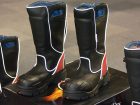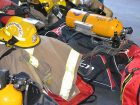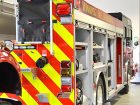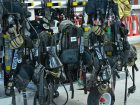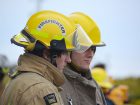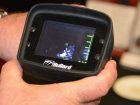
Features
Hot topics
How has the fire service changed in the past 60 years?
In celebration of the 60th anniversary of Fire Fighting in Canada, we asked our Facebook friends what they think has been the most significant development in fire fighting.
May 24, 2017
By
Laura King
A clear theme emerged in the responses – protecting firefighters from injuries and from exposure to carcinogenic components through the use of technology and improved personal protective equipment.
Better gear, better tactics, increased knowledge of fire behaviour, and an understanding of the link between fire fighting and physical and mental wellness have helped to create a safer work environment.
Embracing and using the technology, wearing PPE properly, adopting and following standards, implementing best practices, and ensuring correct hygiene protocol and decontamination techniques are all likely to reduce firefighter cancers and deaths.
Putting water on fire achieves the same result it did 60 years ago; what has changed is the materials that burn, and the tools and equipment used in the response.
Where to start? PPE – from rubber boots and coats to full bunker gear, balaclavas, suppression gloves, Kevlar, auto-ex gloves, thermal imaging cameras, CO and various gas detectors, Scott Pak improvements, Hurst hydraulics, and e-tools – to name a few things that make fire fighting much safer and faster for responders and patients and their property.
District Chief Mike Madaleano, New Tecumseth Fire Rescue, Ontario.
The understanding of the incredible impact of occupational injuries, from cancer and mental illness on firefighters.
Capt. Alex Forrest, president, United Firefighters of Winnipeg, Manitoba.
The fact that it has taken almost all of those [60] years to start to make a dent in diversity in the fire service – much slower and later than any other public safety careers. We have overcome many of the false barriers and we are finally seeing a beachhead established.
Carol Lynn Chambers, principal, Ontario Fire College.
Technology and building advancements – they burn hotter and the byproducts of combustion are highly toxic, which leads to the occupational hazards and cancers we are seeing.
Tom Mehmel, customer service manager, Fort Garry Fire Trucks, Winnipeg.
The most significant fire safety item that has saved more lives than anything else we could ever imagine, is the smoke alarm.
Rick Browning, retired platoon chief, Town of Ajax, Ontario.
I look at the negative. Technology in fire science is amazing, yet we are now building more death traps for firefighters and civilians: lightweight trusses; synthetic furniture; hotter and faster fire development than ever. Why can’t we take our knowledge and improve life safety for both the occupants and for firefighters?
Trent Lee, fire inspector, Saskatoon Fire Department, Saskatchewan.
Providing EMS service [with] limited budgets and personnel. Doing more with less.
Fire Chief Carrie Boshkaykin, Seine River Fire Department, British Columbia.
My list is leadership, development of better thermal imaging and accountability
Training Officer John Uptegrove, Puslinch Fire and Rescue Service, Ontario.
I think worth mentioning is the networking made available due to social media. Being able to draw upon the experience and expertise of colleagues from coast to coast, at virtually any hour, has been great.
Fire Chief Rob Evans, Redwood Meadows Emergency Services, Alberta.
Smoke detectors, which ensure residents are evacuated and save firefighters from having to enter residence for primary search during [the] most dangerous evolution of fire.
Firefighter Joe Kelly, retired, Elmira Fire Department, Ontario.
I think the past 60 years has to be divided into two time frames. For the first 45, technology made our job much easier and safer. Advances in PPE and equipment helped to give firefighters the upper hand. The past 15 years, it has been the fire itself that has been getting the upper hand. Hotter fires and light weight construction has made a significant and scary difference in today’s firefighting.
District Chief Greg Shaw, Charlottetown Fire Department, P.E.I.
When we look back at fire fighting and see what were the reasons our firefighters were not going home at the end of shift, one big reason was the lack of apparatus safety features. We know the rigs were responding to and returning from every incident. The dangers at the scene obviously were significant, however, standing on the tailboard responding to calls with only a leather strap to hold on to made for an interesting ride. Apparatus-related injuries were the [second leading cause of] line-of-duty death. The changes in apparatus due to the NFPA standards have helped some live to retirement age. There are still some that feel seatbelts are not part of their required safety equipment. For every incident you responded to, there were two rides on the truck – double the opportunity for something to go wrong. [You] can’t fight the fire and rescue those in need if you don’t get there.
Chief Ian Laing, Central York Fire Department, Ontario.
[I think] the invention of thermal imagers is one of the greatest tools a firefighter can have.
Mark Prendergast, retired volunteer firefighter, Newington, Ont., and president M&L Supply Fire and Safety.
The breaking down of the old boys’ clubs to encourage people of all races and genders to become new firefighters, while pushing to remove the old thoughts like “suck it up princess” or “coward,” and replace them with “let’s talk about it” and “post traumatic stress.”
Deputy Chief Chris Schwab, Smoky Lake Fire Rescue, Alberta.
The relationship between dirty gear and cancer.
Timo Meaks, structural crew manager, G3 Systems Fire Protection Service, Hearat, Afghanistan.
Print this page
Advertisement
- Comment June 2017: Fire Fighting in Canada celebrates 60 years
- Particulate protection: New firefighting hood technology reduces health risks
